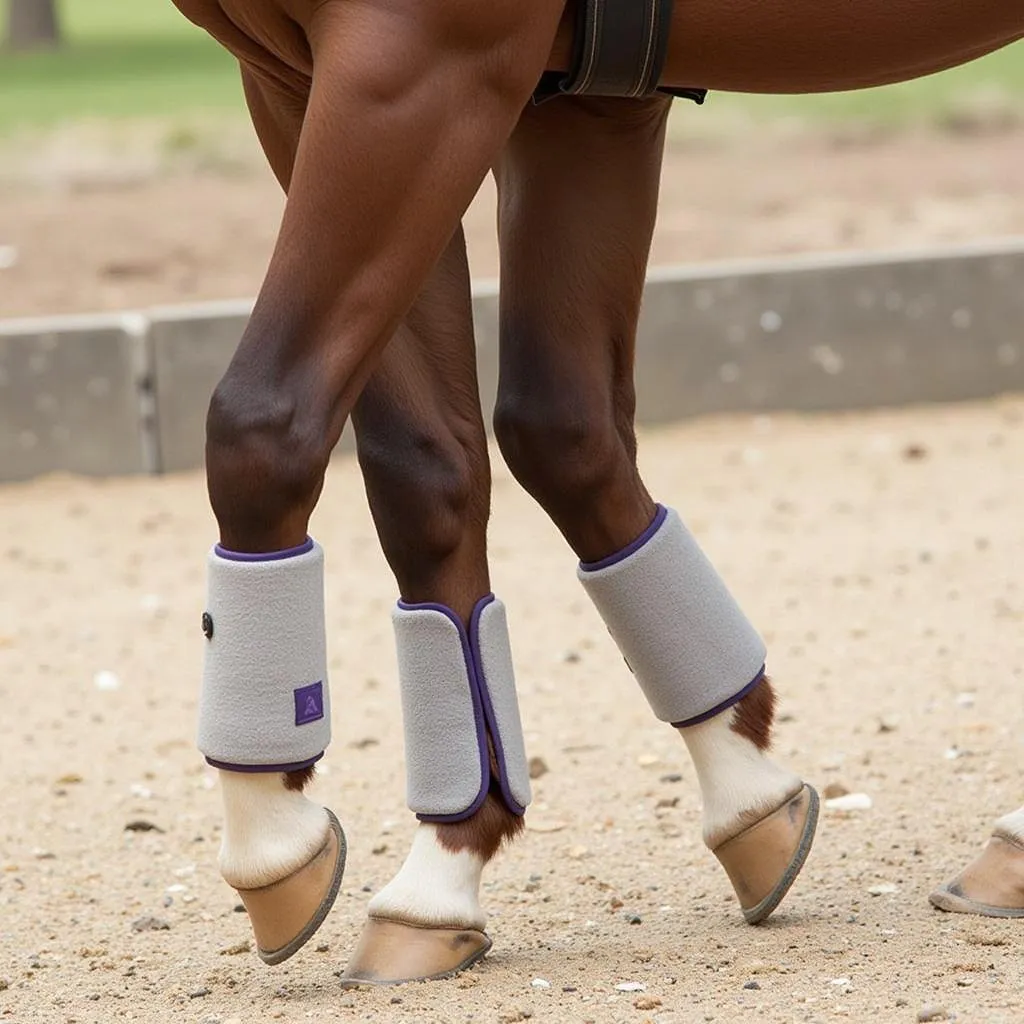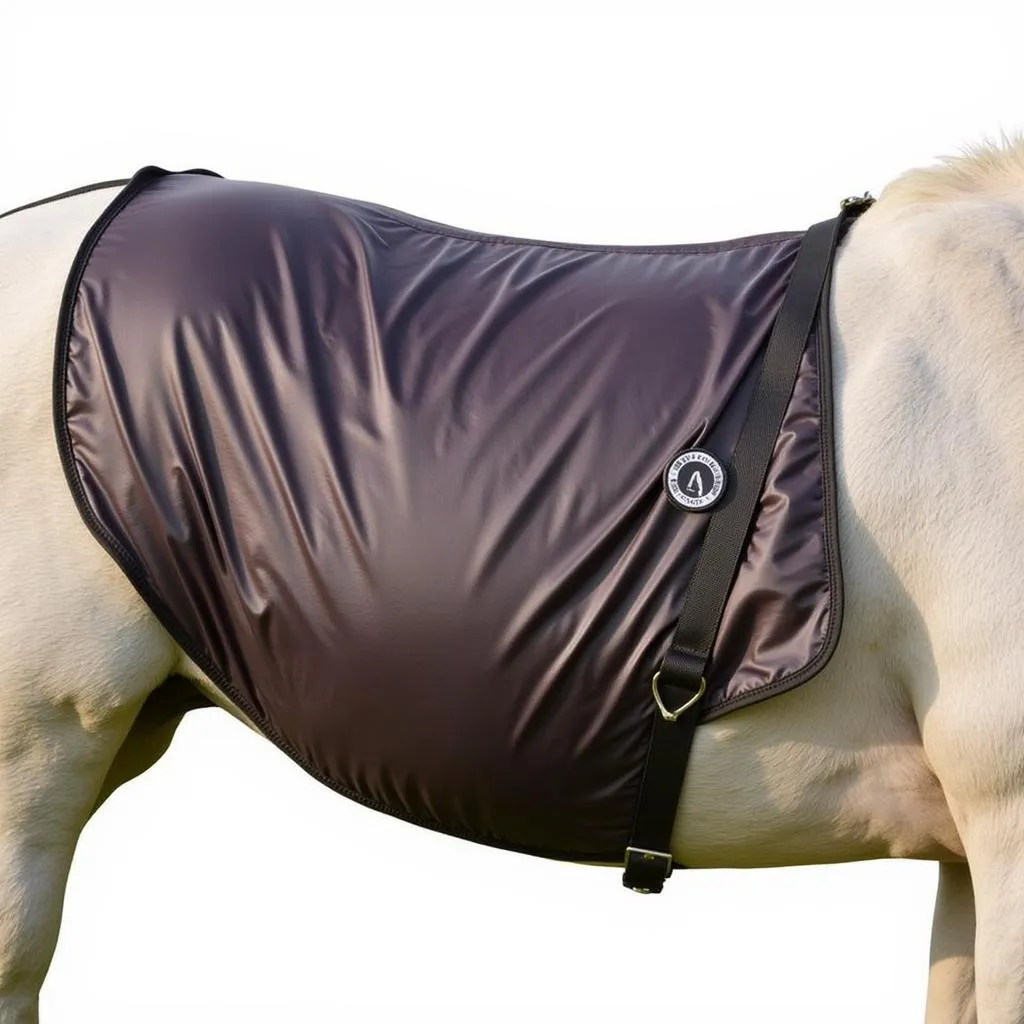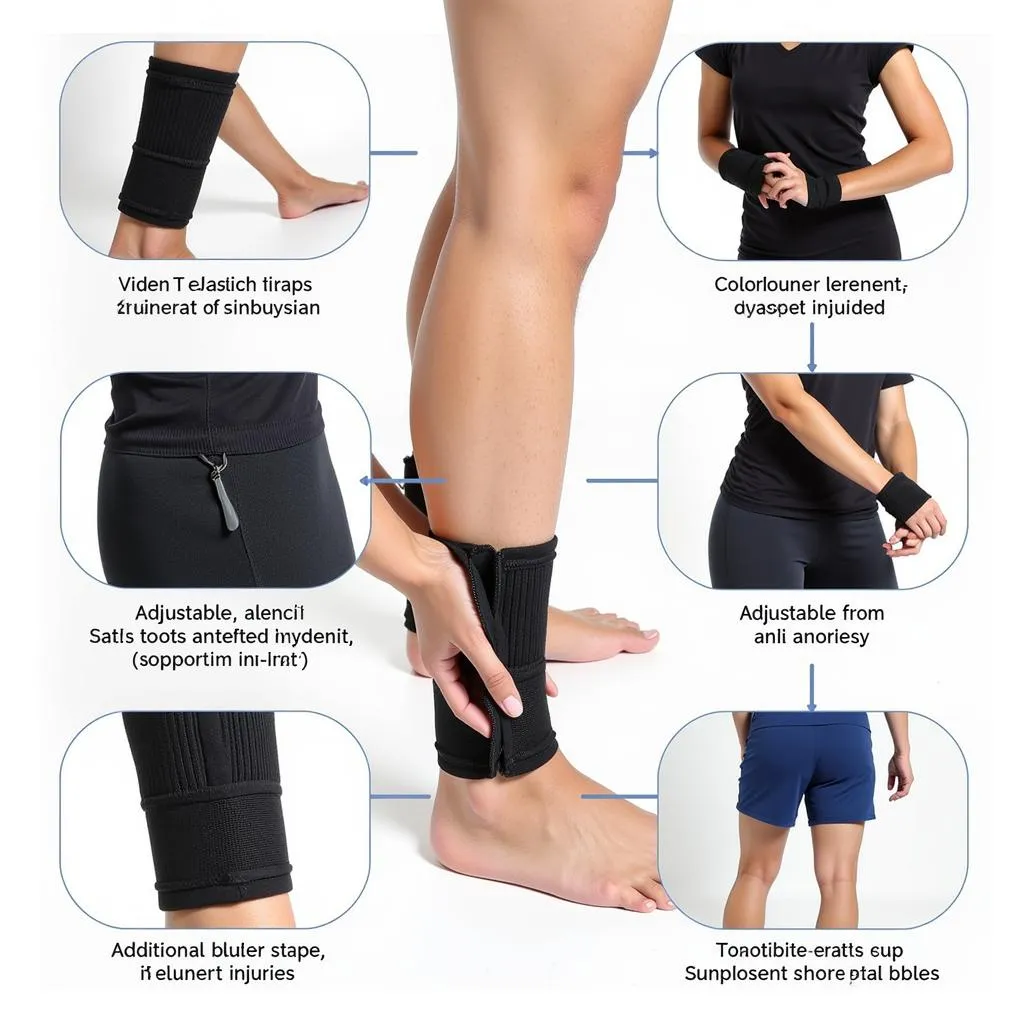Standing wraps are an essential part of horse care, providing support and protection for their legs. They are commonly used for various reasons, including injury prevention, post-workout recovery, and managing conditions like tendonitis. Understanding the different types of wraps, their benefits, and proper application is crucial for ensuring your horse’s well-being. This comprehensive guide will walk you through everything you need to know about Horse Standing Wraps.
Why Use Standing Wraps?
Standing wraps serve multiple purposes, benefiting both healthy and injured horses. They are designed to:
- Provide support: Standing wraps help stabilize the horse’s legs, minimizing the risk of injury, particularly during exercise or strenuous activity.
- Promote circulation: The compression applied by wraps can improve blood flow, which can accelerate recovery from injuries and muscle soreness.
- Protect from external elements: Standing wraps can act as a barrier against debris, dirt, and other environmental factors that could irritate or harm the horse’s legs.
- Aid in wound healing: For horses with wounds or injuries, standing wraps can provide a clean and sterile environment, promoting healing and reducing infection risk.
Types of Standing Wraps
There are numerous types of standing wraps available, each offering specific benefits:
1. Polo Wraps:
 Polo Wraps for Horse Leg Protection
Polo Wraps for Horse Leg Protection
2. Stable Wraps:
 Stable Wraps for Horse Leg Support
Stable Wraps for Horse Leg Support
3. Support Wraps:
 Support Wraps for Horse Leg Injury Management
Support Wraps for Horse Leg Injury Management
4. Therapeutic Wraps:
 Therapeutic Wraps for Horse Leg Healing
Therapeutic Wraps for Horse Leg Healing
How to Apply Standing Wraps: A Step-by-Step Guide
Proper application is crucial for ensuring the effectiveness and safety of standing wraps. Here’s a step-by-step guide:
- Clean the legs: Before applying any wraps, thoroughly clean the horse’s legs with a mild soap and water. Ensure the legs are completely dry before proceeding.
- Select the appropriate size: Choose a wrap that fits snugly but does not constrict blood flow. It should be comfortable for your horse and not cause any discomfort.
- Start at the bottom: Begin wrapping at the hoof, ensuring the wrap is even and does not create any wrinkles or creases.
- Wrap upwards in a spiral: Wrap the leg in a spiral motion, overlapping each layer by about half the width of the wrap. Avoid wrapping too tightly, as this can restrict circulation.
- Secure the wrap: Once you reach the top of the leg, secure the wrap with Velcro straps or clips. Ensure the wrap is secure but not constricting.
- Check for circulation: After applying the wraps, check for circulation by pressing on the horse’s legs. The skin should quickly return to its normal color. If you notice any signs of restricted circulation, loosen the wrap immediately.
Tips for Safe and Effective Wrapping
Here are some additional tips to keep in mind:
- Use the right type of wrap: Choose the right type of wrap based on the specific purpose and condition you are addressing.
- Check the wrap regularly: Inspect the wrap for any signs of wear, tear, or loosening. Replace them as needed to ensure continued effectiveness and safety.
- Avoid over-tightening: Tightening wraps too much can restrict blood flow and damage the horse’s legs.
- Don’t wrap overnight: Avoid leaving wraps on overnight, as this can increase the risk of circulation problems.
- Follow your veterinarian’s instructions: Always consult with your veterinarian for specific recommendations regarding wrapping your horse.
Standing Wraps for Different Conditions
Standing wraps are versatile and can be used for various conditions, including:
- Tendonitis: Support wraps can help stabilize the tendon and reduce inflammation.
- Ligament injuries: Support wraps can provide support and protection for injured ligaments.
- Post-surgery recovery: Standing wraps can help stabilize the leg and promote healing after surgery.
- Preventative care: Polo wraps can provide light support and protection during exercise or training.
Common Questions About Horse Standing Wraps
Q: How often should I change the horse’s standing wraps?
A: You should change the wraps daily, or more frequently if they become soiled or damaged.
Q: Can I leave standing wraps on overnight?
A: It’s generally not recommended to leave standing wraps on overnight, as this can restrict blood flow and increase the risk of problems.
Q: How tight should the wraps be?
A: The wraps should be snug but not tight. You should be able to easily slide two fingers under the wrap.
Q: What should I do if my horse’s leg is swollen?
A: If your horse’s leg is swollen, consult your veterinarian immediately. They can determine the cause of the swelling and recommend appropriate treatment.
Q: Are standing wraps suitable for all horses?
A: While standing wraps can be beneficial for many horses, it’s crucial to consult your veterinarian to determine if they are appropriate for your individual horse and their specific needs.
Conclusion
Standing wraps are a valuable tool for horse care, providing support, protection, and promoting healing. Understanding the different types of wraps, their benefits, and proper application is essential for ensuring your horse’s well-being. By following the guidelines outlined in this guide, you can confidently use standing wraps to support your horse’s health and performance. Remember, if you have any concerns or questions, always consult your veterinarian.
If you need assistance with choosing the right standing wraps or have any further inquiries, please contact us at:
- Phone: 0772127271
- Email: [email protected]
- Address: QGM2+WX2, Vị Trung, Vị Thuỷ, Hậu Giang, Việt Nam
Our team of experts is available 24/7 to provide comprehensive support and guidance.